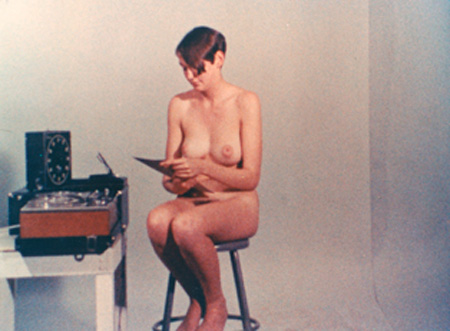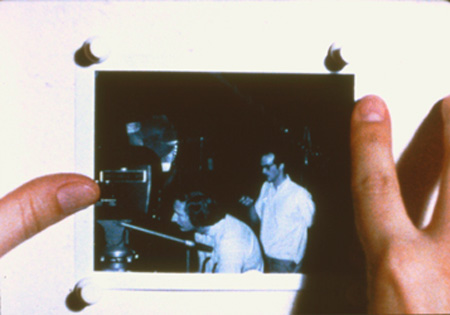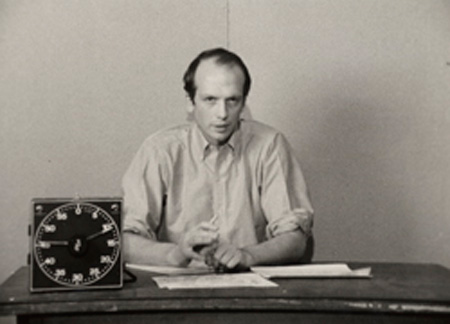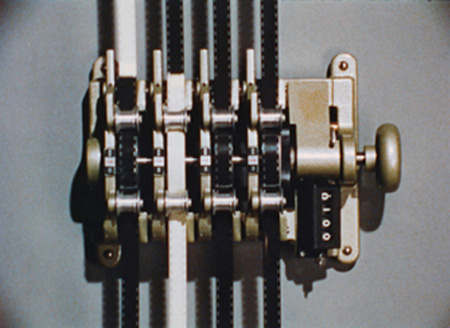The Director and his Actor Look at Footage Showing Preparations for an Unmade Film (2)
“While the first scene is lipsynched, all the rest of the dialogue is spoken by people outside the frame. It relates the comments of the two people watching the film. Nothing groundbreaking is said: it is mostly about recognition and memory - how it is said is important, not what is said”. (Morgan Fisher)
Documentary Footage

“Naturalness wilfully corrupted by inevitable self-consciousness, unwittingly corrupted by unavoidable naturalness, a role played with incredible nuance and complexity by Maurine Connor”. (Mark Toscano)
Phi Phenomenon
The phi phenomenon is a perceptual illusion (first described in 1912 by Max Wertheimer) in which a succession of still images produces a disembodied perception of motion. “Phi Phenomenon is astonishing precisely because its object is so familiar, and it fascinates me because it is a motion picture in which there is movement but no apparent movement.” (Thom Andersen)
Production Stills

“A documentary about nothing but itself; technicians become actors, equipment becomes props; the reality captured by the film exists only for the duration of the film. The soundtrack consists of the mumbling and talking of the crew during production. It is at no point lip-synched.” (Morgan Fisher)
Picture and Sound Rushes

“Picture and Sound Rushes takes the form of a lecture in which Fisher’s deadpan discourse describes the various permutations of sound/silence and picture/no picture. These states are demonstrated in the editing, which cuts between them at regular intervals (determined by dividing a roll of film equally by the total number of combinations), with no regard for the audience struggling to follow the dialogue”. (Mark Webber)
Cue Rolls

“Cue Rolls appears to be a continuous five-and-a-half- minute shot, the visual subject of which is a synchronizer through which four strands of black and white leader are running continuously. As the soundtrack makes clear, Fisher has applied what once was a standard industry practice (for making colour corrections and other modifications before final prints were struck) to a situation in which it would seem to be entirely irrelevant.” (Scott MacDonald)
Projection Instructions
“The projectionist is no longer the means for delivering the performances of actors to the audience; the projectionist is a performer who, at Fisher’s instruction (or, in a sense, at the film’s instruction) succinctly demonstrates (or fails to demonstrate) the various dimensions of the viewing experience controlled from the projection booth”. (Scott MacDonald)